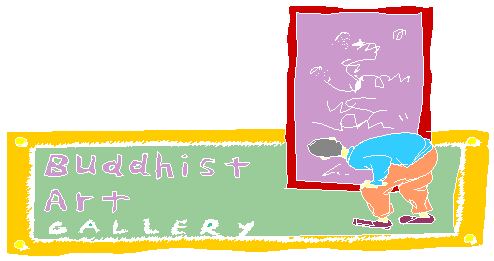

In the last issue, we presented some Sutra illustrations from ancient China. In this issue, we turn to some examples of Buddhist arts from Burma.
According to some studies, the earliest evidence of Buddhism in Burma dates from the fifth century AD. Among the various collections of Buddhist arts in Burma, such as the vast number of sculptures and wall paintings in the Buddhist temples, there is a rich manuscript art. Burmease manuscripts are usually either palm leaf or paper.
Palm-leaf manuscripts were made from the leaves of the talipot. The leaves were separated from the central rib, dried, soaked, redried and rubbed smooth. The text was then incised on both sides of the lesf with a metal stylus, after which the laef was rubbed with charcoal dust or lamp black and the surplus brushed off leaving the incised text legible.
Paper manuscripts were made from long, wide strips of stout paper in folding book format. Some folding book extend to as much as 10 metres. Common subjects were the life of Buddha and Buddhist cosmology. There is a close similarity between wall-paintings and illustrated manuscripts, as if the composition has been transferred from a wall and confined to the manuscript page.
We present in this issue 5 drawings from illustrated paper book on the life of Buddha, previous lives of Buddha and the royal donation, and one ritual text from a palm leaf manuscript.







